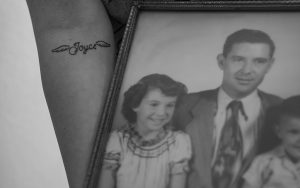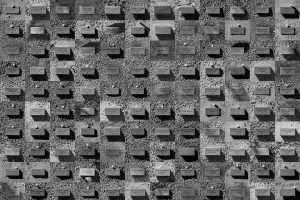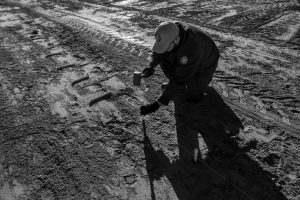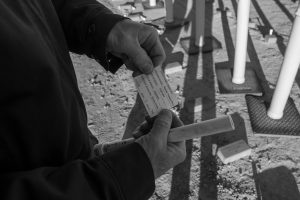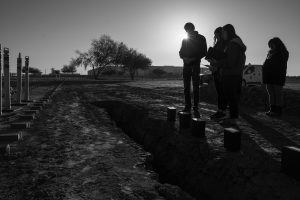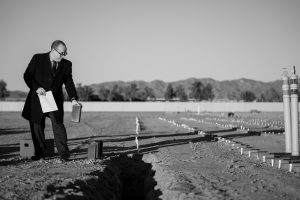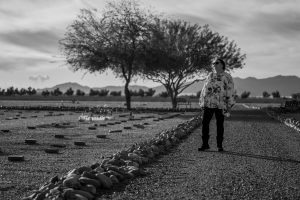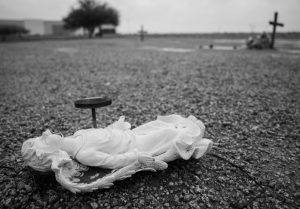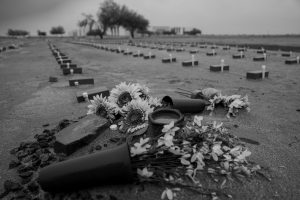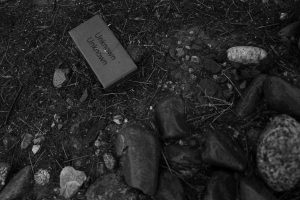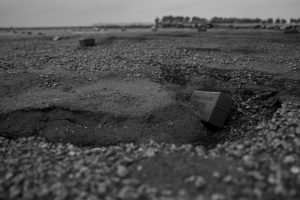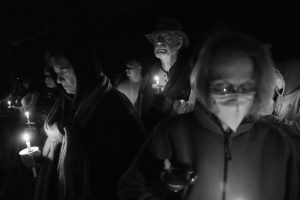- Slug: BC-CNS-Finding Grandma Joyce. 1,400 words.
- 22 photos available (thumbnails, captions below).
- Video story available.
By Samantha Chow
Special for Cronkite News
TUCSON – Sarah Turner was nine months pregnant and in the middle of a move in California when she learned her Grandma Joyce had died of COVID-19. It would take two more years – and a lot of online searching – for her to finally discover where her grandma was buried.
Grandma Joyce was outgoing, silly and above all “very beautiful,” Turner recalls. Her hair was always rolled up in curlers, and she wasn’t afraid to tell it to you straight.
Growing up, Turner loved being at her grandma’s house in Maryvale, whether it was digging up worms in the front yard or sneaking away cookies from the back room.
“I endured a lot of things during my childhood, and some of the sweet times to get away were when we were up at my grandma’s,” she said.
Turner knew that her grandmother had been hospitalized in the Phoenix area in June 2020. The hospital had been calling looking for Turner’s mother, identified as the next of kin, to make a decision regarding intubation. But Turner says her mother had herself been hospitalized after an assault, and told her daughter, “Tell them (the hospital) to do whatever.”
“I told them, ‘Please save her,’” Turner said.
Shortly after, on June 22, 2020, 73-year-old Joyce Maryanna Williams died.
The call that informed Turner didn’t come from the hospital or the county but from her grandma’s best friend – a woman she’d never met. She would have to look on her own to find out what happened to her grandma.
“I didn’t know who to call, because nobody called me to let me know where my grandma’s at,” Turner said.
She tried calling the physical rehab center where her grandmother had been along with the hospital, but nobody was able to answer any of her questions.
“I just wasn’t sure what they were doing with her and that was my biggest fear,” Turner said.
Between September 2021 and August 2022, 718 people in Maricopa County died alone, meaning next of kin were unable to be located or refused to handle arrangements.
But what happens when someone dies alone? Who decides how they are buried and where? And how do loved ones find their final resting place?
That’s where organizations and online sites such as Ancestry.com and Find a Grave – and people like Theresa Chesser – come in.
In the fall of 2022, Turner upgraded her Ancestry.com account in hopes of learning more about her genealogy. After doing so, she noticed a little green leaf by her Grandma Joyce’s name, indicating “hints” or new information.
It led her to a website called “Find a Grave” where she was able to see her grandma’s profile and, most importantly, her final resting place: White Tanks Cemetery.
In simple terms, Find a Grave, a subsidiary of Ancestry.com, is an online database of cemetery records. Since 1995, over 226 million virtual memorials have been created by its community of “gravers” who have uploaded details such as the decedent’s name, birth date, death date, burial location and headstone photos to build virtual cemeteries in all seven continents.
Many gravers do this to document their genealogy or find famous people’s gravesites. But a few, like Theresa Chesser, have found a different motivation: to help find lost loved ones.
The ‘Desert Angel’
Since 2012, Chesser, a graver who goes by the nickname “Desert Angel,” has created over 8,200 memorials and added over 760 photos to Find a Grave.
She was introduced to the website by her sister-in-law who was a genealogist. “When I found out about Find a Grave, I was hooked,’” Chesser said.
She discovered that White Tanks Cemetery in Litchfield Park was only about 10 miles away from where she lived in southern Peoria. At the time, Chesser recalls there being about 150 virtual memorials created for the cemetery on Find a Grave.
“When I decided to come down and look at these graves, I found that there was a lot more,” Chesser said.
As she went from gravesite to gravesite, she started noticing three letters on some of the early burial markers at White Tanks: “UNK.” Only later did she discover the meaning: Unknown.
After doing more research, Chesser learned that White Tanks Cemetery is Maricopa County’s final resting place for the unidentified, indigent and unclaimed.
“I decided that these people that have rested here needed to be known, and I felt that they had people that were looking for them,” Chesser said.
Chesser began documenting the gravesites with paper and pen, sometimes bringing a broom with her to clear dirt off of the grave markers from monsoons for a better look. After jotting down what information could be seen on the grave marker and noting its location within the cemetery, Chesser would return home to her computer to create virtual memorials on Find a Grave.
One day, a woman from California contacted Chesser to thank her for helping find a cousin who had been missing for years and all along been buried at White Tanks Cemetery. The woman described Chesser as an “angel,” and from that point forward she began going by “Desert Angel.”
The appreciation motivated Chesser to continue documenting gravesites at White Tanks Cemetery.
Maricopa County’s Unclaimed, Unidentified and Indigent
Under Arizona law, if no one is willing or financially able to make burial arrangements, the county in which a death occurs is required to step in.
While each situation is unique, the process typically begins with a health care facility or medical examiner’s office calling one of three funeral homes that partner with Maricopa County’s indigent decedent services program.
The funeral home then shares what information it has with the county, which begins trying to locate next of kin via email, phone calls, certified mail, obituaries and sometimes social media, said Michele Castaneda-Martinez, who manages the indigent decedent services program.
About 40% of the time, the search is successful. But more than half the time, when no one steps forward to claim the decedent and after a minimum of 15 days, the county moves forward with a burial to ensure a “timely and dignified disposition,” Castaneda-Martinez said.
If the decedent was a veteran, the county works with the Missing in America Project for funeral arrangements at a national cemetery, or is otherwise interred at White Tanks Cemetery, where over 6,800 people have been laid to rest since 1993.
Every Thursday at 8 a.m., one of several rotating chaplains volunteers to lead a nondenominational ceremony before that week’s burials. And every Thanksgiving eve, André House of Arizona hosts a vigil to pray for those who have died.
“These decedents, despite how they may have arrived to us, are not alone,” Castaneda-Martinez said. “The community has come together to ensure that.”
At the current rate, the county expects to be able to continue burials at White Tanks Cemetery for approximately 60 years, but Castaneda-Martinez says there are options that can extend the lifetime of the cemetery.
‘Facing Reality’
When Turner first clicked over to the Find A Grave website, she saw her grandmother’s name in a big white sans serif font along with details about her life and an image of her brick grave marker at White Tanks Cemetery. She was suspicious of the information, but after confirming her grandmother’s birth and death date, she determined its accuracy.
A graver other than Chesser had documented the information about Turner’s grandmother. But Turner still isn’t sure how her grandma ended up at White Tanks Cemetery.
“I wish we were more family oriented to be able to work together and say, ‘Hey, grandma’s gone. Let’s lay her to rest correctly the way she wanted it,’” Turner said.
While she wasn’t able to give her grandma the funeral she would have liked to, Turner said she is grateful that someone was able to step forward and lay her grandma to rest.
“I feel guilty,” Turner said, “but she knows, life has not been easy for us.”
Turner, who now lives in an apartment in Tucson with her husband and two young kids, hasn’t visited her grandma’s gravesite yet.
“I really want to but then there’s that part of me that’s like afraid because that’s me facing reality,” Turner said.
Whenever Turner is ready, she’ll be able to find her grandmother’s gravesite located in lot 13 among a sea of red bricks, one of which reads: “Joyce Maryanna Williams, 1/19/1947, 73.”
For more stories from Cronkite News, visit cronkitenews.azpbs.org.
